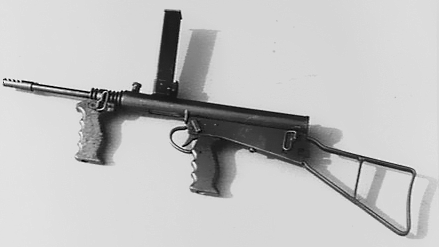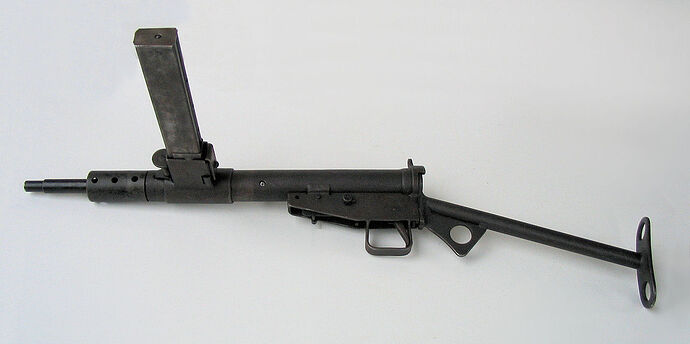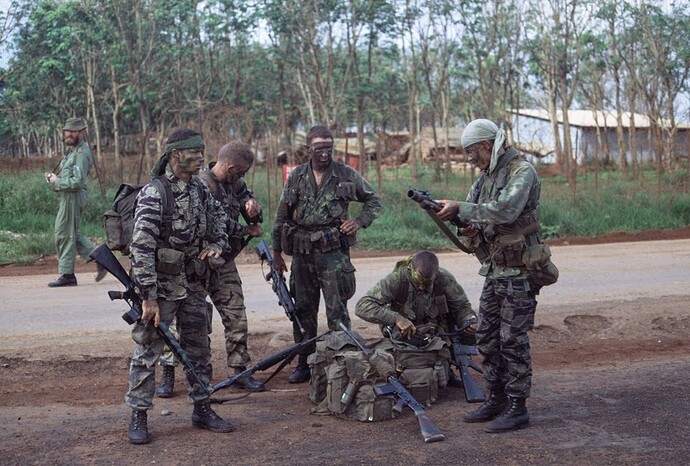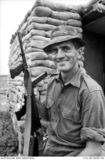When production started in 1942, the Owens gun was somewhat bulky. It was tested for three different calibers - 9mm, .45ACP, and 38-200. The 9mm was the wiining caliber but the initial batch of ammo was not the right type and the government had to intervene to go around the military bureaucracy. A very reliable gun, the Owens was nicknamed the " Diggers Darling. " New Zealand troops swapped their Thompsons for the Owens and it was rumored that American troops favored them as well.
The British Sten Gun was also chambered in 9mm. It was simple and cheap to manufacture and put an automatic weapon into the hands of the infantry supplementing the presence of the Lee Enfield bolt actions rifles. But the Sten’s accuracy was not good. Their effective ranges was about 30 meters. Plus jamming was a common problem as well as accidental discharges, sometimes going off just by laying them down. One very dramatic instance of a Sten Gun jamming was during the assassination of SS Obergruppenfuhrer Reinhard Heydrich on on 27 May 1942, when a Czechoslovak soldier – Warrant Officer Jozef Gabčík – fired his Sten point blank at Heydrich, only to have it misfire. His comrade Jan Kubiš then hastily tossed a grenade, which mortally wounded Heydrich. The Sten Guns were loved and hated almost equally earning suchn colorful nicknames as “Plumber’s Nightmare”, “Plumber’s Abortion”, or “Stench Gun”. So which would you want to carry into combat?[ATTACH=CONFIG]7810 Owens gun[/ATTACH]










